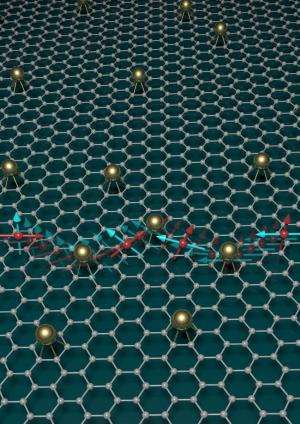Pseudospin-driven spin relaxation mechanism in graphene

The prospect of transporting spin information over long distances in graphene, possible because of its small intrinsic spin–orbit coupling and vanishing hyperfine interaction, has stimulated intense research exploring spintronics applications. However, measured spin relaxation times are orders of magnitude smaller than initially predicted, while the main physical process for spin dephasing and its charge-density and disorder dependences remain unconvincingly described by conventional mechanisms.
In a recent publication in Nature Physics, ICN2 researchers unravel an unprecedented spin relaxation mechanism for non-magnetic samples that follows from an entanglement between spin and pseudospin driven by random spin-orbit coupling, unique to graphene. The work was led by ICREA Research Prof. Stephan Roche, Group Leader of the ICN2 Theoretical and Computational Nanoscience Group. The first author of the paper is Dr. Dinh Van Tuan, from the Group led by Prof. Roche, and ICREA Research Prof. Sergio O. Valenzuela, Group Leader of the ICN2 Physics and Engineering of Nanodevices Group, is among the authors.
The mixing between spin and pseudospin-related Berry's phases results in fast spin dephasing even when approaching the ballistic limit, with increasing relaxation times away from the Dirac point, as observed experimentally. The origin of spin-orbit coupling can stem from by adatoms, ripples or even the substrate, suggesting novel spin manipulation strategies based on the pseudospin degree of freedom.
Such possibilities suggest unprecedented approaches for the emergence of non-charge-based information processing and computing, resulting in a new generation of active (CMOS compatible) spintronic devices together with non-volatile low-energy MRAM memories. This phenomenon not only revisits years of experimental and theoretical controversies, but also opens a new window into the formidable challenge of manipulating spin degree of freedom in future information-processing technologies.
More information: Dinh Van Tuan, Frank Ortmann, David Soriano, Sergio O. Valenzuela, and Stephan Roche. Spin transport in graphene: pseudospin driven spin relaxation mechanism. Nature Physics, 2014;. 10, 857–863; DOI: 10.1038/nphys3083
Journal information: Nature Physics


















